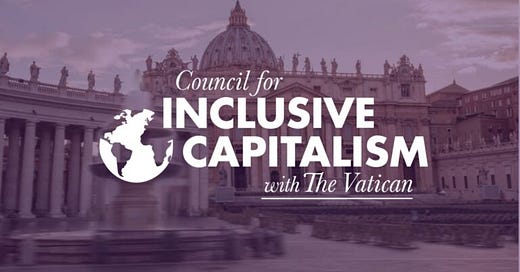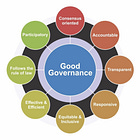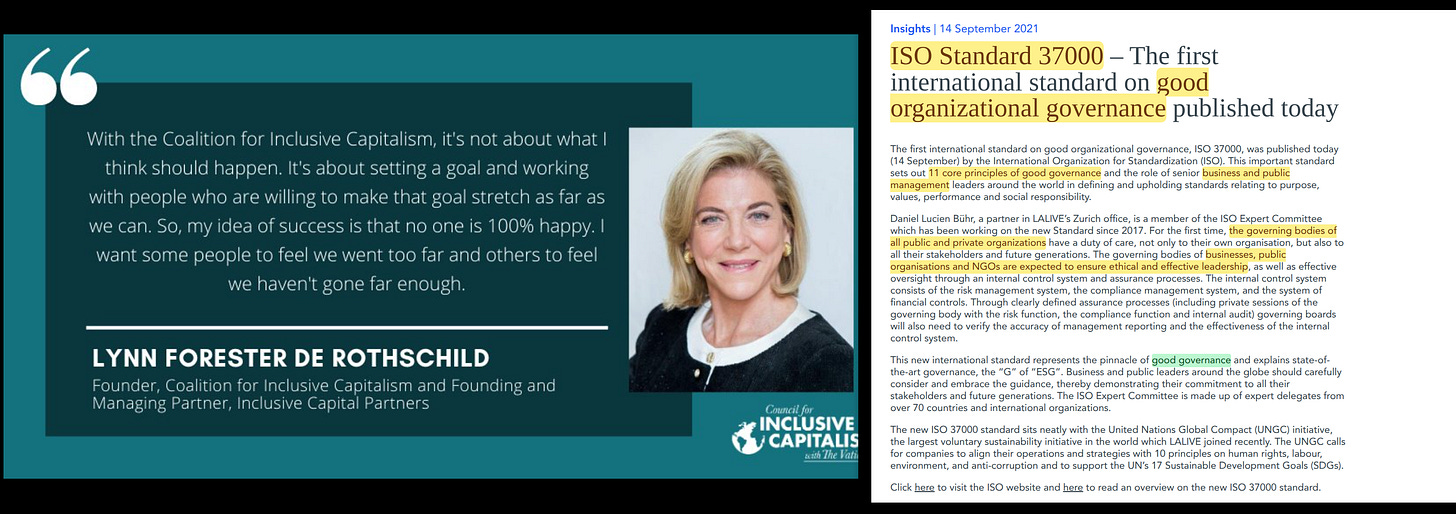mBridge, Helvetia, Genesis, and Nexus — these are cornerstone technologies implemented through the Bank for International Settlements’ Innovation Hub.
Together, they comprise a bridge and three rails which constitute the central nervous system of the future global digital economy.
Briefly, these four comprise:
mBridge1 - The money rail (Monetary settlement core).
The programmable central bank digital currency (CBDC) core.
A shared distributed ledger, agnostic of national currency units, that records individual transactions and links them to verified digital wallets. Enables cross-border, atomic, and programmable settlement between central banks.Helvetia23 - The assets rail (Capital markets integration).
The tokenised capital markets layer.
Helvetia integrates CBDCs from systems like mBridge with tokenised financial assets, such as digital bonds, equities, and other market instruments, enabling their secure, real-time settlement in central bank money.Genesis4 - The compliance rail (Ethical/policy enforcement).
The moral-ecological compliance and tracking layer.
Genesis couples tokenised assets (ie ESG bonds) with real-time environmental and social surveillance data (ie carbon output, air quality, solar energy generation). This enables automated impact verification, programmable payouts, and policy-enforced ethical constraints.Nexus56 - The Integration Bridge (Transition layer for retail interoperability).
The integration bridge from legacy real-time payment systems
Nexus connects existing domestic Fast Payment Systems (FPS) and Real-Time Gross Settlement (RTGS) networks (like India’s UPI, Singapore’s FAST, or the EU’s TIPS), enabling cross-border retail payments without needing full CBDC deployment. It serves as a transitional infrastructure, preparing legacy systems for eventual convergence with programmable finance platforms like mBridge.
When merged, these components form a systemic architecture capable of imposing ethical constraints on programmable assets — including money — by replacing manual audits with real-time verification driven by continuous surveillance data. The entire system is globally coordinated by the world’s central banks and designed to operate seamlessly across borders.
This programmable infrastructure serves as the precursor to an economy in which nearly every economic action is measurable, automatable, and subject to real-time scoring and feedback — enabling the transition from a traditional digital economy to a so-called ‘moral economy’ governed by metrics of the common good. And this direction is increasingly codified through international standards, including recent ISO frameworks, such as:
ISO 420017 establishes standards for AI management systems, ensuring transparency, fairness, and accountability in automated decision-making.
ISO 370008 sets global benchmarks for stakeholder organisational governance, providing a framework for ethical oversight and risk management.
ISO 371019 defines requirements for sustainable communities, offering guidance on long-term resilience, well-being, and responsible development.
ISO 3712210, focused on indicators for smart and sustainable cities, provides a harmonised language for urban data analysis—facilitating the integration of digital twin models for urban planning, resource allocation, and quality of life assessment.
ISO 1409711 offers a framework for assessing climate-related investments, containing indicators for emissions targets, climate impact metrics, and risk exposure and mitigation strategies.
ISO 2100112 sets requirements for management systems of educational organisations, aiming to improve learning processes, learner satisfaction, and alignment with broader social and developmental goals.
ISO 2200013 defines international standards for food safety management systems, ensuring the integrity of food supply chains from production to consumption.
ISO 2451014 provides guidelines for the assessment and improvement of water and wastewater services, focusing on service quality, user satisfaction, and sustainable resource management.
ISO 2600015 provides guidance on social responsibility, outlining principles and core subjects that organisations should address to operate ethically and sustainably.
ISO 20022161718, an open standard for financial messaging, enables richer and more structured data flows across digital financial rails—supporting automation, regulatory compliance, and large-scale analytics.
Collectively, these standards enable the deployment and integration of indicators and controls across finance, urban governance, AI management, and institutional oversight. They provide the technical definitions and ethical frameworks for a future global moral economy—one facilitated through indicators that, in essence, constitute normalised and harmonised surveillance data. Metrics such as DEI indicators19 (Diversity, Equity, and Inclusion), the SDG indicators20 (UN Sustainable Development Goals), the Aichi indicators21 (Convention on Biological Diversity biodiversity targets), and the HDI Indicators22 (Human Development Index) function as complementary global benchmarks, encompassing well-being, equity, environmental impact, social cohesion, and economic opportunity.
These indicators are thus designed not merely for performance measurement, but as levers for the real-time guidance of public and private behaviour — enabling the infrastructural conditions for a comprehensive ‘soft social credit’ system. Such a system can nudge or restrict economic actions at the governance, corporate, or systemic level, in alignment with designated criteria of the common good, such as climate change mitigation or biodiversity preservation.
But that leaves the Social Credit System for the individual, to which we shall return.
Most of the individual Sustainable Development Goals (SDGs) — spanning health, poverty, education, equity, infrastructure, environment, and governance — can be directly mapped to existing international indicator frameworks, particularly those established by ISO, the Human Development Index (HDI), and biodiversity protocols such as the Aichi Targets:
SDG 1 – No Poverty
ISO: 26000 (Social Responsibility), 37101 (Sustainable Communities)
Global: HDI23 (income, education, life expectancy)SDG 2 – Zero Hunger
ISO: 22000 (Food Safety), 26000 (Social Responsibility)
Global: FAO Food Security Indicators24, SDG 2 metricsSDG 3 – Good Health and Well-being
ISO: 37122 (Urban Health Indicators)
Global: HDI (life expectancy), WHO Global Health Indicators25SDG 4 – Quality Education
ISO: 21001 (Educational Organisations)
Global: HDI (education), SDG 4 metrics26SDG 5 – Gender Equality
ISO: 26000 (Gender Inclusion Guidance)
Global: SDG 5 indicators, Gender Inequality Index27SDG 6 – Clean Water and Sanitation
ISO: 24510/11/12 (Water Services)
Global: SDG 6 indicators, WHO/UNICEF Joint Monitoring Programme28SDG 7 – Affordable and Clean Energy
ISO: 50001 (Energy Management), 52000 Series (Energy Performance)
Global: IEA Energy Access and Efficiency Metrics29SDG 8 – Decent Work and Economic Growth
ISO: 30414 (Human Capital Reporting), 45001 (Occupational Health & Safety)
Global: ILO Indicators30, HDI (income), SDG 8 metricsSDG 9 – Industry, Innovation and Infrastructure
ISO: 56002 (Innovation Management), 37101 (Sustainable Communities)
Global: SDG 9 indicators, WEF Innovation Metrics31SDG 10 – Reduced Inequalities
ISO: 26000 (Social Equity), 30415 (Diversity and Inclusion)
Global: Gini Index32, SDG 10 metricsSDG 11 – Sustainable Cities and Communities
ISO: 37122 (Smart City and Digital Twin Indicators)
Global: Aichi Targets33 (Urban Green Access), SDG 11 metricsSDG 12 – Responsible Consumption and Production
ISO: 14040/44 (Life Cycle Assessment), 20400 (Sustainable Procurement)
Global: SDG 12 indicators, Ecological Footprint Data34SDG 13 – Climate Action
ISO: 14097 (Climate Investments), 14001 (Environmental Management)
Global: Aichi Target 1435 (Ecosystem Services), SDG 13 indicatorsSDG 14 – Life Below Water
ISO: 14001 (Marine Ecosystem), 24510 (Water Services)
Global: UNEP Marine Indicators36, Aichi Marine TargetsSDG 15 – Life on Land
ISO: 14001, Aichi Indicator 15.9.1, Ecosystem Standards
Global: Red List Index37, Aichi Biodiversity TargetsSDG 16 – Peace, Justice and Strong Institutions
ISO: 37000 (Organisational Governance), 37301 (Compliance Management)
Global: SDG 16 indicators38 (e.g. 16.3 on justice, 16.5 on corruption)SDG 17 – Partnerships for the Goals
ISO: 44001 (Collaborative Business Relationships)
Global: SDG 17 metrics, International Cooperation Indicators39
The reason for listing all 17 SDGs in full is simple: to demonstrate that every single global development goal is already tethered to a corresponding set of indicators, and that most of these indicators are directly supported by existing ISO standards and complementary global metrics.
This is not a vision of the future — it is a fully developed normative-technical infrastructure, quietly standardised and globally harmonised. The foundation for a programmable, ethical economy — in which financial flows, institutional conduct, and individual behaviour are continuously scored, nudged, or constrained in the name of the ‘common good’ — already exists40.
Digital twins — virtual, data-driven models of physical, social, or economic systems — are now being constructed at every scale: from human health41, cities42 and national economies43 to ecosystems44 and planetary systems45. These twins use real-time and historical indicator data—standardised through frameworks such as ISO 37120/37122, the SDGs, HDI, and Aichi Targets—to replicate and simulate reality. This enables scenario testing, impact forecasting, and predictive modelling of risks and opportunities.
At the urban level, city-scale digital twins46 can simulate the effects of zoning changes, public health interventions, or transit shifts on goals such as SDG 11 (sustainable cities), climate mitigation, and equity outcomes. Economic twins can model policy changes' impacts on SDG 1 (poverty alleviation) and SDG 8 (decent work and economic growth). Ecological twins use satellite imagery, IoT devices47, and biodiversity data to track and forecast changes relevant to SDG 14 (life below water) and SDG 15 (life on land), aligned with Aichi biodiversity indicators and ISO environmental standards.
These digital twins operate at multiple levels: micro (individuals and communities), meso (cities and regions), and macro (national and global systems). They integrate data streams from satellites, mobile networks, IoT sensors, health records, and international surveys — making them central tools for governing the emerging global moral economy through simulation, prediction, and ethical constraint.
But while we’ve seen how the moral economy integrates governments and corporate enterprise into its architecture, one critical domain remains: the individual. This layer is brought into alignment through a graduated system of behavioural nudging48, cultural engineering49, ethical frameworks, and social credit mechanisms50.
The intelligence and fidelity of digital twins feed directly into advanced cultural engineering systems — frameworks designed to analyse behavioural patterns, simulate responses to interventions, and issue targeted nudges or restrictions that steer individuals and organisations toward socially acceptable outcomes. These can take the form of real-time social scoring, algorithmic recommendations, or active gating of financial and social actions that deviate from the moral economy’s evolving hierarchies of the common good.
Structured around principles such as solidarity, reciprocity, transparency, subsidiarity, and dignity, these systems preserve the appearance of decentralised agency, granting individuals and communities limited autonomy—while ensuring that top-down coordination guides society as a whole toward scientifically and ethically prescribed public goods.
In this model, policy is no longer fixed or deliberative but becomes a feedback-driven process, continuously adjusted and enforced through real-time data inputs—an adaptive management regime executed by increasingly intelligent AI.
Alongside infrastructure and data standards, emerging urban norms such as the ‘15-minute city’51 — which encodes ideals of liveability, sustainability, and resilience—are being operationalised through the standardised indicators of ISO 37122 and the SDG framework. Digital Identity (ID) systems525354, now widely implemented as prerequisites for accessing both state and commercial services, further bind individuals to data-driven regimes of authentication, eligibility, and programmable entitlements.
Vaccination schedules and public health metrics now feed into global health twins and SDG-linked governance structures, effectively tying individual and population health outcomes to international feedback loops. All of these systems are converging, laying the operational foundation for the architecture of planetary governance55.
Wrapper mechanisms manage the flow of information in an era defined by pervasive mis- and disinformation. These include journalism standards, educational curricula, and digital literacy programmes designed for rapid correction, cognitive resilience, and lifelong behavioural conditioning. Meanwhile, AI ethics56 and neuroethics57 frameworks—such as those developed by UNESCO, IEEE, and the OECD—are increasingly embedded into regulatory codes and technical standards. These frameworks address issues such as algorithmic bias, data governance, automation impacts, privacy, neurotechnology, and brain data protection, while enforcement regimes supply the normative basis for social, educational, and professional sanction.
Yet all of these frameworks, indicators, and behavioural interventions ultimately depend on a vast, multilayered surveillance infrastructure — drawing data from mobile devices, satellite streams, IoT sensors, health records, traffic systems, social media, and internet logs. This infrastructure captures both individual and systemic behaviour, generating continuous and near-ubiquitous data flows that power the digital twins, inform adaptive governance, and sustain the feedback loops through which AI nudges, steers, and autocorrects human society.
The system is increasingly envisioned as being governed by autocorrecting AI operating under the principles of adaptive management—learning continuously from both experimental interventions and observational feedback in an iterative cycle of optimisation. As human labour is gradually displaced by automation, the remaining social roles are those least susceptible to mechanisation: care, empathy, creativity, and adaptive judgment.
This aligns uncannily with Karl Marx’s observation in the Fragment on Machines58 that ‘the development of fixed capital indicates to what degree general social knowledge has become a direct force of production’. In other words, labour is no longer valued primarily for manual input, but for the degree to which it aligns with, supplements, or adapts to the autonomous processes of the machine. Under this regime, human beings are repositioned as ethical and emotional counterweights to automated systems—performing the irreducibly human tasks of moral mediation, affective care, and imaginative innovation that machines cannot replicate, but which the system still requires in order to maintain legitimacy and flexibility.
Marx foresaw a moment when living labour would be subordinated to the intelligence embedded in capital itself. That moment has arrived — not through industrial machinery alone, but through a digital infrastructure in which algorithms do not just accelerate production, but govern it, simulate its consequences, and nudge both institutions and individuals toward normative compliance. In this configuration, AI becomes the sovereign manager — not only of labour and capital, but of morality, behaviour, and the permissible bounds of human action.
These trends point to an accelerating process of conscious evolution, as theorised by visionaries such as Julian Huxley and Teilhard de Chardin — the purposeful steering of both biological and technological development toward the Omega Point: a convergence of humanity, technology, and universal consciousness. Where Marx foresaw the subordination of labour to machines, Huxley and Teilhard envisioned the alleged elevation of humanity through them.
Technologies such as brain-computer interfaces59 (BCIs), predictive genomics, and direct AI integration are no longer speculative — they are converging rapidly into a transhumanist architecture wherein evolutionary trajectories are not merely recorded or interpreted, but actively managed. This is evolution by design: a shift from natural selection to cybernetic selection, from adaptation by necessity to adaptation by intent. In this framework, the boundary between human and machine blurs — not just physically, but morally and spiritually — giving rise to new categories of agency, personhood, and governance.
What emerges is a civilisation in which biology, information, and ethics are fused — an intelligent system that recursively evolves itself through feedback, optimisation, and normative enforcement. The Omega Point is no longer just a theological metaphor or philosophical aspiration; it is becoming an operational target embedded in the logic of our technologies, institutions, and standards.
While this planetary digital governance paradigm promises immense improvements in efficiency, security, and social alignment with the common good, it also concentrates power at a scale and scope without historical precedent. The integration of scoring systems, behavioural nudging, identity verification, economic access, and health governance into a unified AI-managed infrastructure places extraordinary control in the hands of a small, unelected, and largely unaccountable supranational elite — operating in concert with tightly coupled machine intelligence.
These systems are not neutral. Though often framed in terms of optimisation or planetary stewardship60, their design encodes normative assumptions, institutional priorities, and commercial interests61. The opacity of algorithmic governance, especially when combined with the structural incentives of global finance and geopolitics, opens the door to profound asymmetries of power. Entire populations may find their rights, access, and even social standing determined by predictive scores, behavioural flags, or risk profiles generated by systems that are neither fully transparent nor contestable.
In such a system, governance is no longer merely about representation or law, but about access to the protocol — who controls the infrastructure of inclusion, and who decides what constitutes ethical behaviour, social risk, or alignment with the common good. It is not simply the automation of governance; it is its moralisation, its weaponisation, and potentially, its dehumanisation.
How We Reached This Moment
This synthesis has emerged as each technological, financial, and governance component has locked into place:
The BIS and aligned central banks have built the foundational rails for a programmable monetary system, enabling transaction-level control and cross-border interoperability.
ISO and companion standards bodies have provided the technical and ethical scaffolding—ensuring system-wide interoperability, transparency, and alignment with normative objectives.
Global indicator frameworks—the SDGs, Human Development Index, and Aichi Biodiversity Targets—form the measurement substrate, linking individual and institutional behaviour to planetary policy goals.
Digital twins allow for predictive simulation and real-time adaptive management across all levels of society, enabling efficient policy learning and systemic steering.
Surveillance infrastructure delivers continuous, real-time data flows—capturing human and ecological behaviour at scale, and feeding the loop of feedback-driven governance.
Cultural engineering, behavioural nudging, and social credit systems—grounded in emerging ethical regimes—subtly but decisively guide societies toward predefined visions of the common good.
Artificial intelligence, increasingly autonomous and embedded, assumes the role of societal pilot—optimising resource allocation and behavioural patterns, while freeing human beings to assume roles in care, creativity, and meaning-making, as the economy is managed toward outcomes of inclusion, sustainability, and moral coherence.
We are rapidly approaching the crystallisation of a planetary governance system — a digital, moral, and inclusive economic architecture built atop programmable finance, global standards, ethical metrics, and adaptive AI, all underwritten by ubiquitous observation and continuous feedback. This convergence offers immense potential for positive-sum advancement, but it also brings with it the very real and immediate risk of consolidating a level of centralised control, discretionary power, and behavioral management unprecedented in human history. The task now before us — urgent and unavoidable — is to strike the ethical, legal, and institutional balance between shared human outcomes and the preservation of dignity, autonomy, and cultural plurality. This is the defining challenge of the age now dawning.
But — wait. According to the recent EU AI Act62, and the emerging frameworks in the UK and US63, there's a problem. Each explicitly prohibits the integration of social credit systems with central bank digital currency transactions. The law is clear: CBDCs must not be used to enforce behavioural compliance through programmable constraints.
Yet this only poses a challenge for those who haven’t made a career out of engineering workarounds to legal or ethical limitations. And that brings us back to a crucial piece of the puzzle: ISO 20022.
Because here’s the trick — while regulations may forbid embedding behavioural rules directly within transactions, the system can simply split the logic in two. The transaction is tagged with standardised metadata — climate, equity, or sustainability labels, for instance — while the interpretation of that metadata, and the enforcement of any behavioural conditions, is offloaded to the user’s wallet.
This move has a powerful consequence: central banks can claim — truthfully, in a narrow technical sense — that their CBDCs are not programmable. The programmability resides not in the money, but in the wallet. And with that architectural sleight of hand, the letter of the law is preserved — while its spirit is quietly erased.
Consequently, the future world order — guided by technocratic Sustainable Development Goals which no-one voted for, shaped through behavioural nudges, imposed via cybernetic empiriomonism and direct constraints embedded within the moral economy — will enable precisely what one might otherwise describe as:
Inclusive Capitalism64.
The technical framework is already here.
The real battle will be over who governs it — ethically65. And that’s where we return to ISO 37000’s focus66 on outlining the familiar Fabian guild socialist structure in the context of ‘Good Governance’67 and ‘Ethical Leadership’ — with other ISOs similarly calling for same as well68.
All that’s left at national level is to break down the separation between monetary and fiscal policy. But through ‘In Tandem’, the Fabian Society have already issued the call to do exactly that — for sakes of a ‘moral economy’, of course — with the Financial Stability Board working to harmonise legislation, cross-border.
The dream, first outlined in the communist manifesto69:
Centralisation of credit in the hands of the state, by means of a national bank with State capital and an exclusive monopoly.
… can finally come true — though at global level, thus leaving you nowhere to hide.
Finally — let me place my stake firmly in the ground. But feel free — through sourced literature and published papers — to prove me wrong.
Keep reading with a 7-day free trial
Subscribe to The price of freedom is eternal vigilance. to keep reading this post and get 7 days of free access to the full post archives.



























































